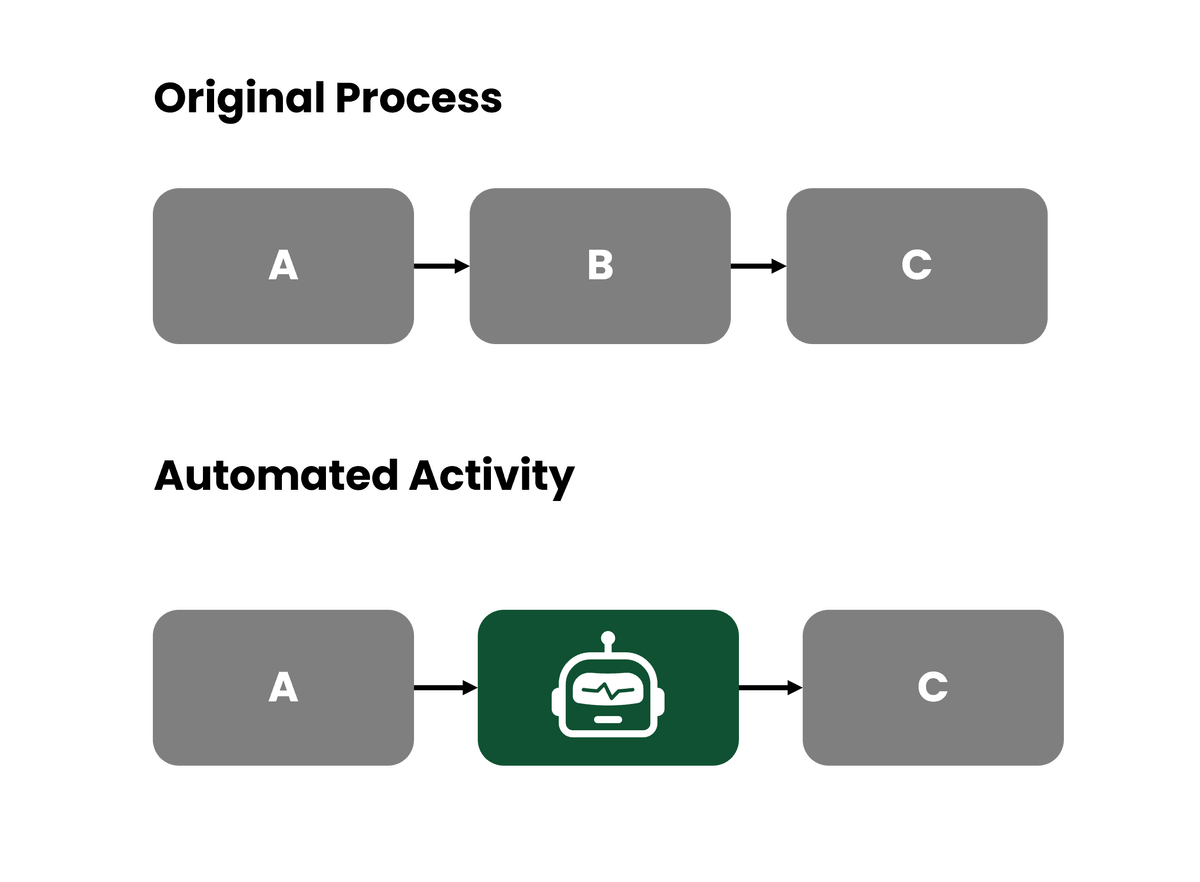Automate for environmental impact
Implement automation in a sustainable way
How can we reduce the environmental footprint of a process by introducing automation for specific tasks?
Nowak, A., Leymann, F., Schleicher, D., Schumm, D., & Wagner, S. (2011, October 21). Green business process patterns. Proceedings of the 18th Conference on Pattern Languages of Programs. PLoP 11: Pattern Languages of Programs Conference 2011.
Description
Business processes are based on both human and IT supported activities that aim at achieving a certain strategic objective. These activities need to be organized in such a way that organizations are most profitable and ecological goals within a given environment can be met. Rationalizing some activities is one possibility to reach this objective.

Challenges
The identification of activities that can be automated can be a challenging task. The automated activity needs to perform the task in such a way that either the result remains the same or is even improved or the costs are getting much lower. In the latter case the trade-off between the environmental impact, the costs, and the expected quality needs to be addressed in detail. It must further ensure the global integration with other activities that are dependent on that activity.
Solution
Organizations (partially) streamline specific activities within a business process by automating them.
Example
A telecommunication company needs to send its customers an invoice for their connections every month. Usually, the invoices are sent to the customers via mail. Now, the company changes the charging process and transmits the information directly and fully automated to the customers via e-mail. This process restructuring saves time, cost, and in particular decreases the environmental impact caused by the paper manufacturing, the invoice printing, and the transport of the delivery company.
Variations
Single activities must not be totally automated. They can also be semi-automated or split into an automated and a manual part to better (i.e. more efficiently) support human process performance.
Relations to other Patterns
This pattern is strongly related to Human Process Performance as it covers the contrary situation. Depending on the structure of the business process, both patterns can be used to ecologically optimize processes on an activity changing basis.
Performance considerations
The automatization of specific process activities provides the means for optimizations from both, a regular and an ecological perspective. Time, quality, and costs can be improved while energy consumption can be reduced, for example.
Share this pattern
Enjoy these
Foundational free Patterns
Establish a case-based mindset
Remove batch-processing and periodic activities from your business process
Design business processes for typical cases and isolate exceptional cases from the normal flow
Establish standardized interfaces
Consider a standardized interface with customers and partners
Replace underlying resources with eco-friendly alternatives
Let customers interact with the company wherever they want to
Explore whether a process can easily be used for additional products or services
Workload-based task assignment
Allocate tasks based on individuals' incomplete workload
Reassign tasks along the organisational hierarchy
Performance-based task assignment
Allocate tasks based on past performance: execution time and success
Share this
Connected to
Consider whether it is eco-friendly to let humans work over machines
Consider automating activities
Elevate physical constraints by applying new technology